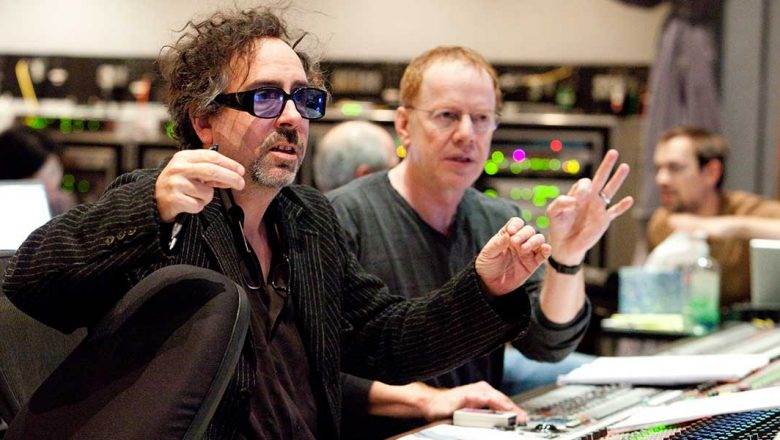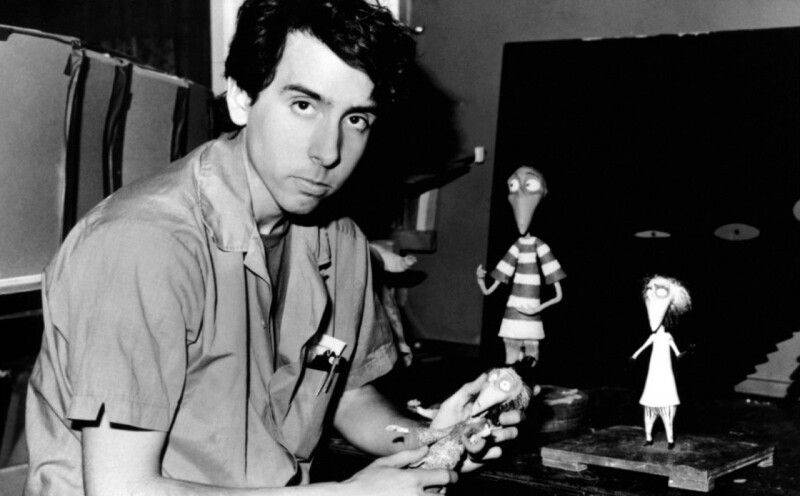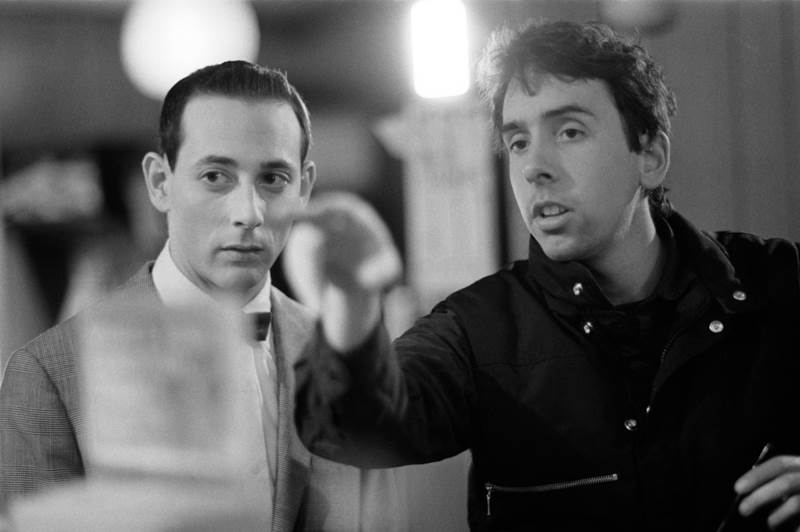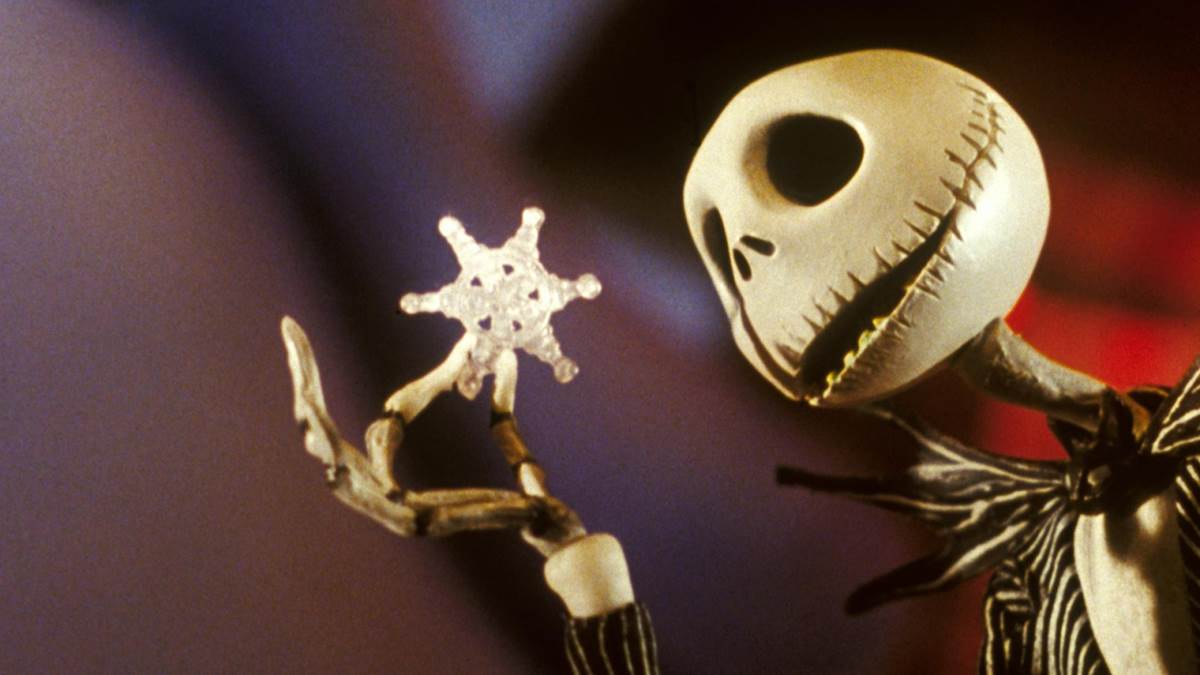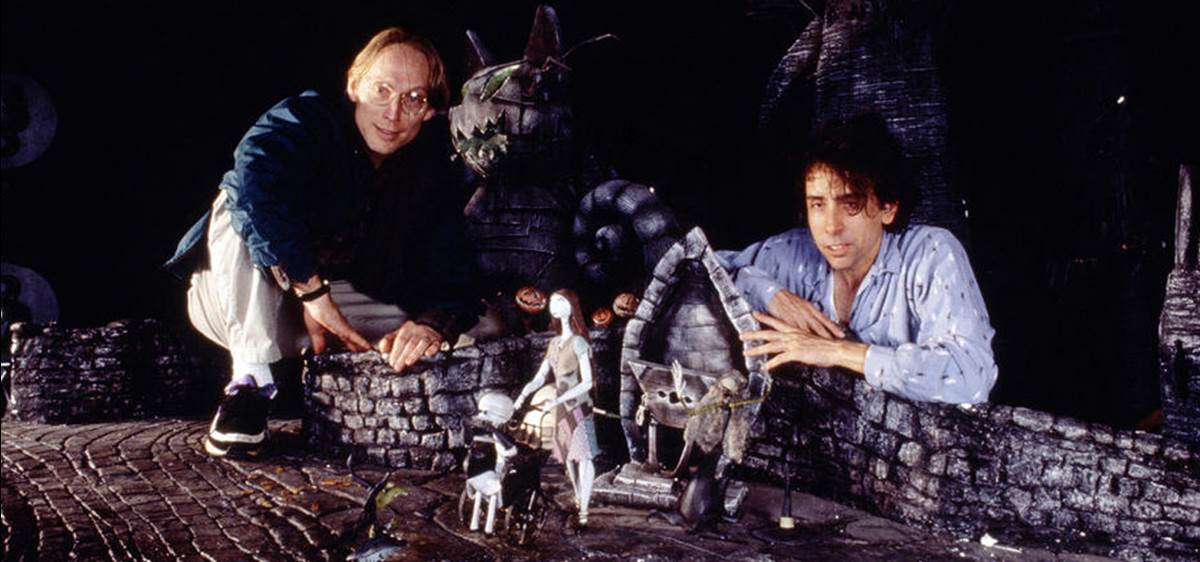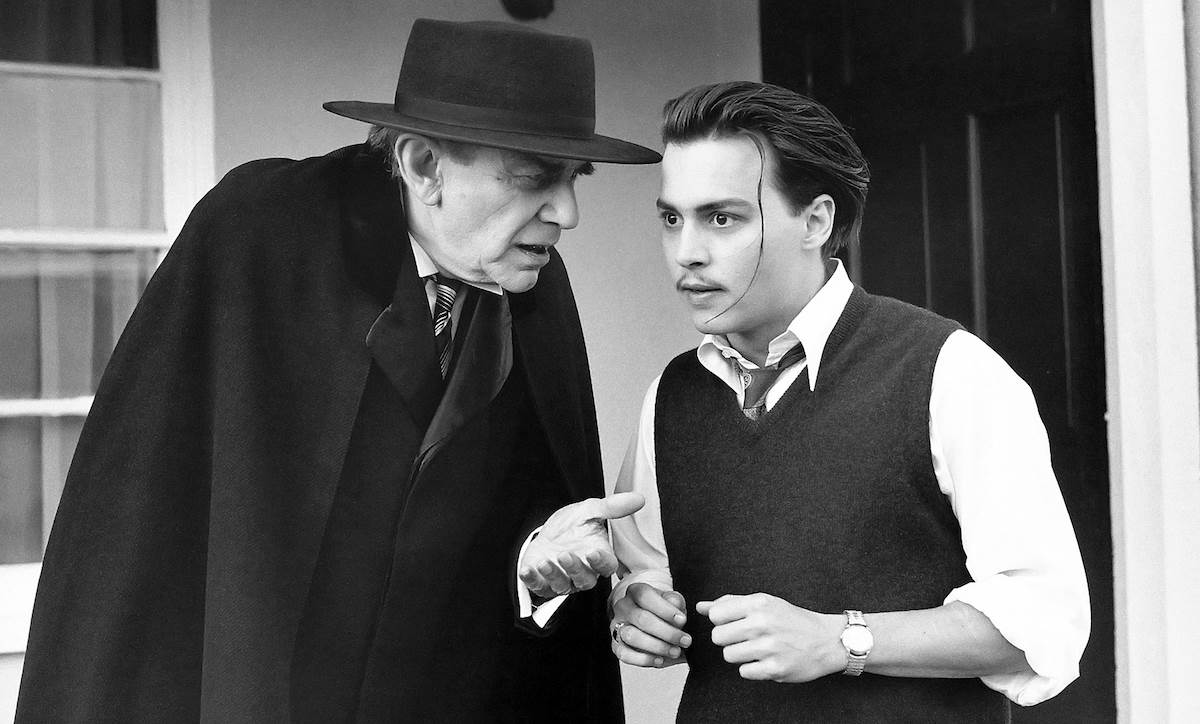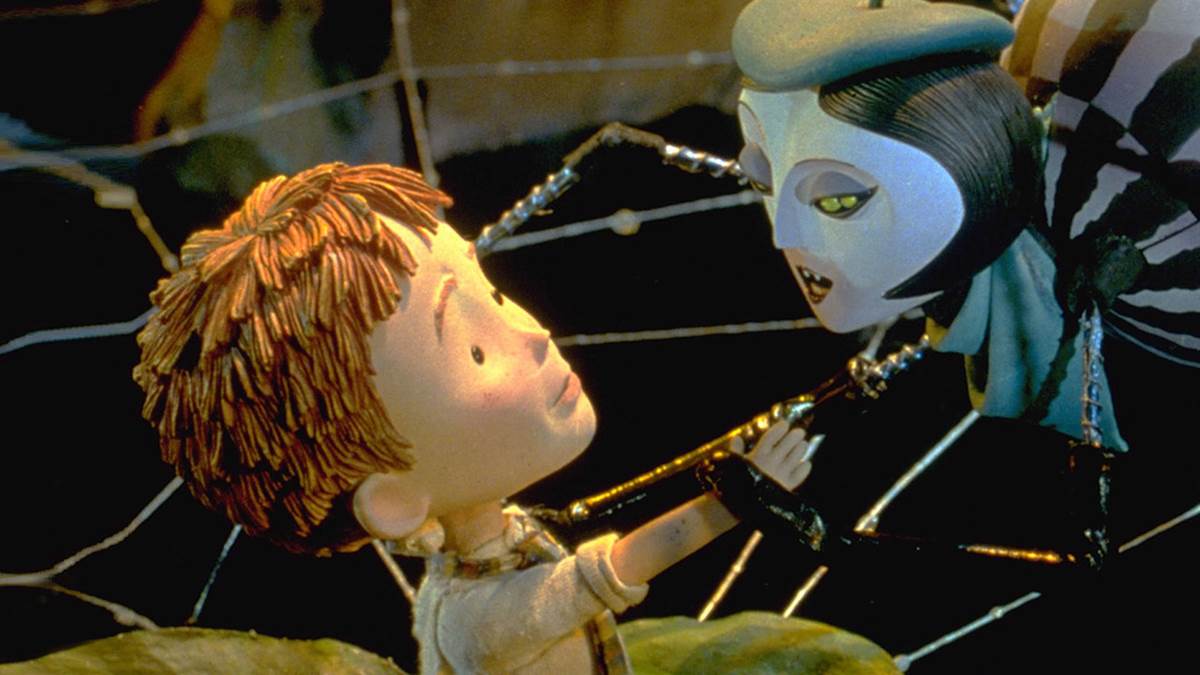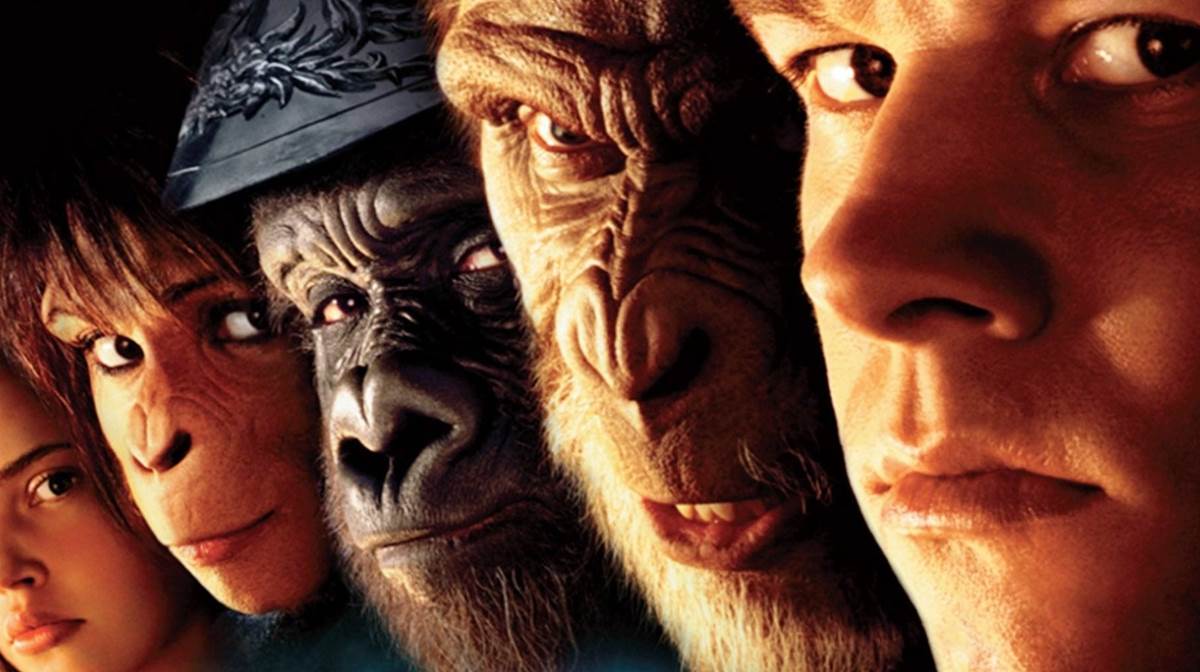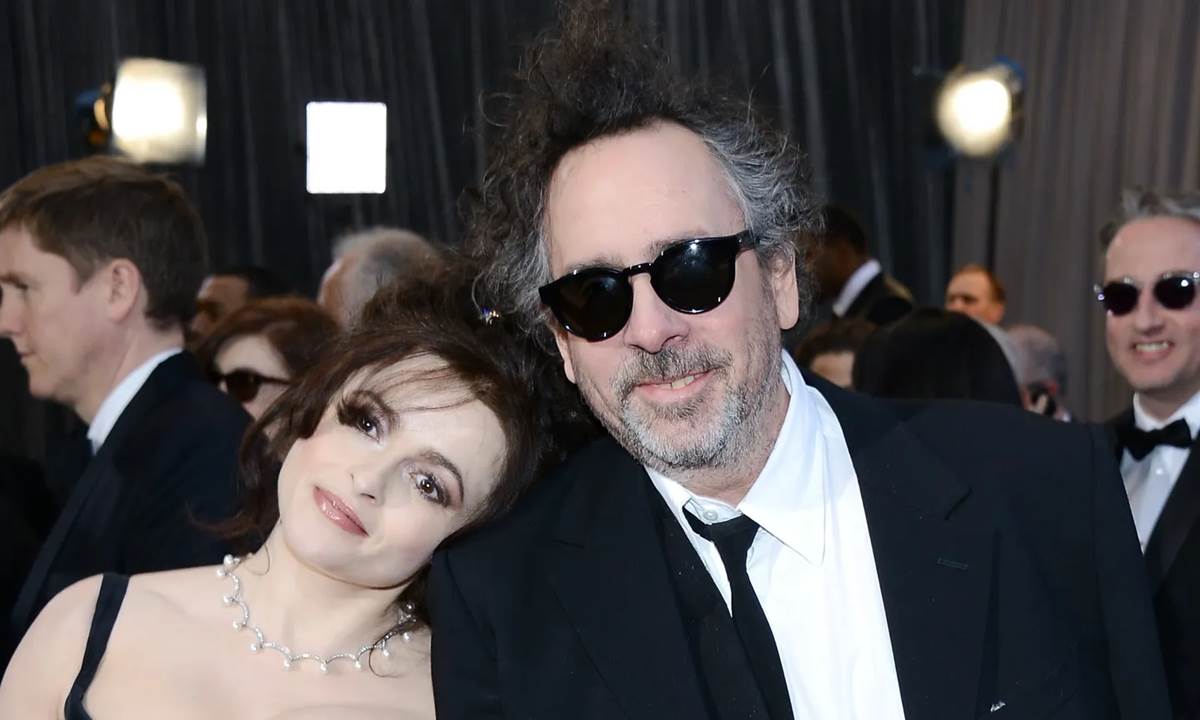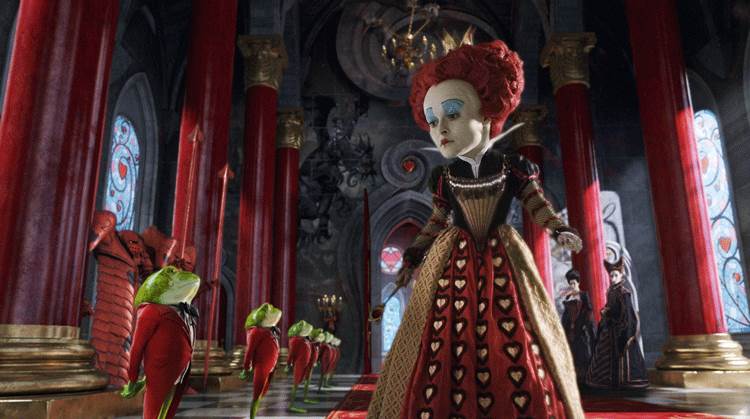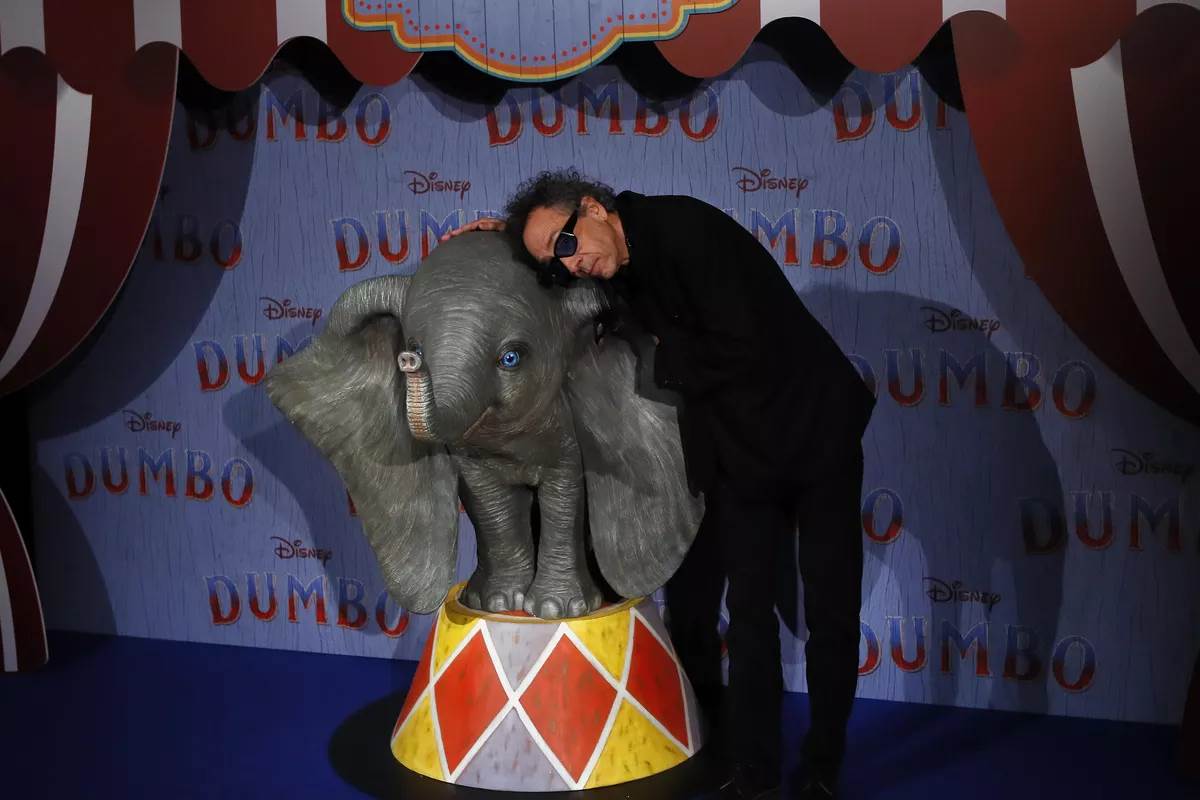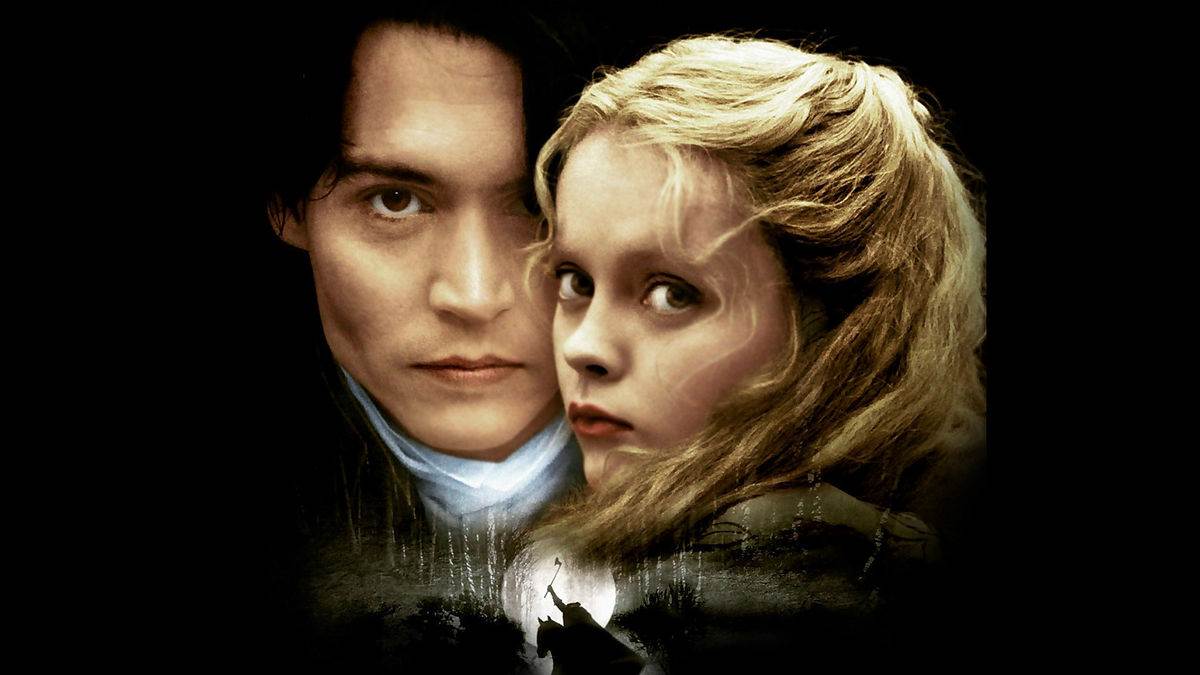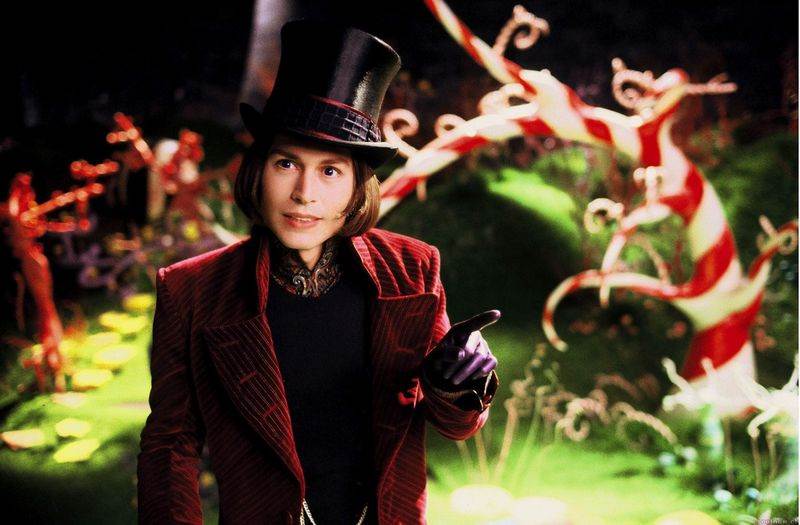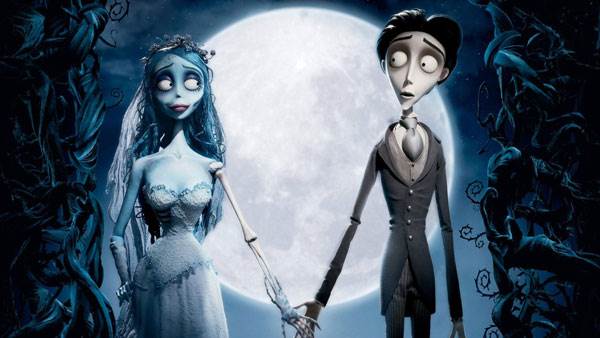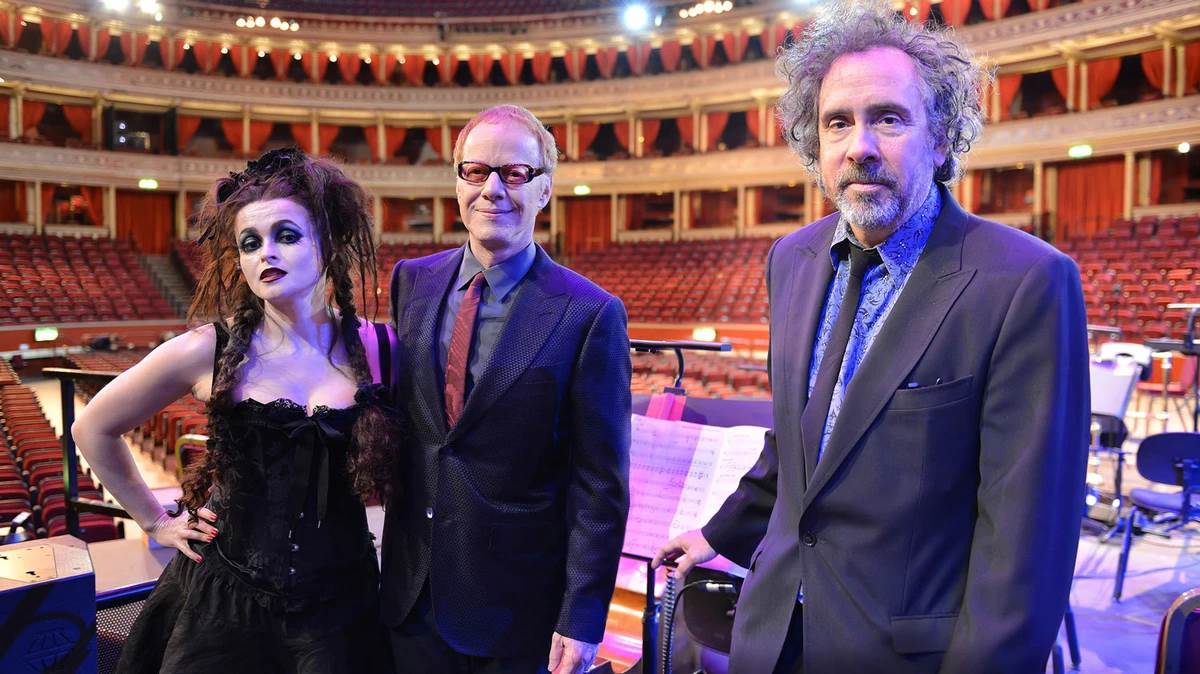Why Isn’t He a Disney Legend? The Eccentric Genius of Tim Burton
What does it take to be a Disney Legend? The talents who have been recognized for this exclusive club range from animators, musicians, actors, directors, producers, writers, Imagineers, and even a few lawyers and businessmen. Some Legends come with a resume flush with contributions to a great many Disney projects. Others are honored largely based on one iconic role or moment.
In our new series, we’ll explore some individuals who have provided priceless contributions to the Disney catalog, but have yet to be formally recognized as Disney Legends. First up on our list is Tim Burton - a creator, director, and producer of many successful Disney (and non-Disney) films. Let’s learn more about this creative genius in our first installment of Why Aren’t They a Disney Legend?
A Boy in Burbank
Timothy Walter Burton was born August 25, 1958 in Burbank, California. Growing up with two parents who lived unusual careers, Burton’s life seemed destined to be different than most. His mother Jean owned a cat-themed gift shop, and his father Bill was once a minor league baseball player, who eventually worked for the City of Burbank Parks and Recreation department.
Burton’s childhood life was one of quietness and solitude. He was obsessed with classic American horror films of Roger Corman - several of which featured silver screen villain icon Vincent Price, who became one of Burton’s idols. As a preteen, Burton was already practicing his creative tendencies - making short films using crude stop motion animation techniques.
Burton was not a particularly good student, but he made his way through Burbank High School, earning a place for himself on the school’s water polo team. Burton was an introspective person - not exactly an ideal personality trait for a successful high school social experience. Outside of school, he found pleasure in creating artwork, painting, drawing, and watching movies.
Breaking Into Showbiz
Despite his lack of scholastic aptitude in high school, Burton was admitted to the California Institute of the Arts (CalArts) in Valencia,CA to study character animation. Stalk of the Celery Monster - one of Burton’s projects at CalArts, attracted the attention of the animation division of Walt Disney Productions. In 1980, upon graduation from CalArts, he began working as an apprentice animator for Walt Disney Studios.
While at Disney, Burton worked as an animator, storyboard artist, graphic designer, art director, and concept artist on several films, including The Fox and the Hound (1981), Tron (1982), and The Black Cauldron (1985). Disappointingly, his contributions never made it into the finished films, as Burton’s style just didn’t jive with the Disney brand of animation. However, Disney did support Burton’s alternative artistic aspirations, and in 1982 assisted Burton in the production of his first short film, Vincent. This semi-autobiographical six-minute black-and-white stop motion film was based on a poem Burton wrote, depicting a young boy who fantasizes that he has become his hero - actor Vincent Price. Burton, having grown up idolizing Price in some of his favorite horror films, managed to get Price himself to provide narration for the film. This was a big score for a budding filmmaker!
Burton's next live-action film - 1984’s Frankenweenie - clocked in at 29 minutes. It tells the story of a young boy who tries to revive his dog after it is run over by a car and killed. Frankenweenie was a gruesome concept, yet the film also maintained a wholesome feel.
Discarded By Disney
After Frankenweenie was completed, Disney fired Burton, with the rationale being that he spent too much of the company's resources on a film that was too dark and scary for its target audience - children. According to producer (and Disney Legend) Don Hahn, Disney "didn't really know what to do with him." Hahn explained that Burton was fired for being too quirky and “making some odd movies."
Opening Doors
So often in life, when one door closes, another opens. Actor Paul Reubens - better known at the time as children’s entertainer Pee-wee Herman - saw Frankenweenie. Reubens was immediately sold on Burton’s style, and chose him to direct his feature film Pee-wee’s Big Adventure. The film cost only $7 million to produce, but earned $40 million at the box office, elevating Pee-wee Herman’s popularity and leading to a successful multi-year run of the follow-up children’s television show Pee-wee’s Playhouse.
Image: Warner Bros.
Burton, a fan of the eccentric musical group Oingo Boingo, asked the group’s frontman and songwriter Danny Elfman to provide the music for the film. This began a long-time professional relationship, whereby Elfman went on to score all but three of Burton’s future films (Ed Wood, Sweeney Todd: The Demon Barber of Fleet Street, and Miss Peregrine's Home for Peculiar Children).
Burton’s next major project was the 1988 supernatural comedy/horror Beetlejuice. In this offbeat film, a young couple is forced to cope with life after an unexpected death, while a family of pretentious yuppies moves into their treasured New England home. Michael Keaton performed the title role as the crude and morbid Betelgeuse. Danny Elfman scored the film, which went on to earn $75 million in theaters vs. a production cost of only $15 million.
A Darker Knight
Burton's ability to produce hits with low budgets impressed studio executives, and his talent was rewarded when he was offered to direct his first big budget film - 1989’s Batman. In casting Beetlejuice actor Michael Keaton for the title role, Burton famously clashed with the film’s producers, who wanted a more mainstream (and bulked up) action film star. Burton won out with Keaton and cast veteran actor Jack Nicholson as Batman’s rival Joker. Both actors received critical acclaim for their roles. The film was a blockbuster, and put Burton on the map as a successful big budget film director.
Image: Warner Bros.
In directing Batman, Burton also helped redefine what superhero films could be. Burton ditched the colorful, wholesome (and often boring) perfection of many classic film-based superheroes with more realistic, imperfect (and interesting) character psychology, similar to what Disney Legend Stan Lee did with Marvel comic book characters in the 1960s.
Burton went further down the dark hero rabbithole in 1992 with Batman Returns. In this film, he redefined the famous villain Penguin from an amusingly short, goofy man into a gruesome, disfigured human. The film was another big budget hit for Burton, though like most sequels, was not as profitable as the original.
Getting Personal
In 1990, Burton co-wrote and directed Edward Scissorhands - a story about Edward,who is the creation of an eccentric old inventor (played by Vincent Price). Edward looked human, but as you might guess, was endowed with scissors in the place of hands due to his inventor’s untimely death. Edward also had a difficult time communicating with others, contributing to his difficulty in succeeding in the film. Edward Scissorhands is considered by some to be one of Burton's best films, and Burton himself has said that this is his most personal and meaningful film because it speaks to his own difficulties communicating with others as a teenager.
Image: 20th Century Fox
Aside from being an act of personal disclosure, Edward Scissorhands also has the distinction of being the first of many films on which he would partner with his friend (and another Disney Legend) Johnny Depp. The pair would continue to collaborate on a total of nine films.
This Is Halloween
In the early 1990s, Burton reunited with Disney to create and produce his long-time brainchild, 1993’s The Nightmare Before Christmas. This vision of Burton’s originated as a poem he wrote in 1982 while working as a Disney animator. Burton told the story of Jack Skellington, the King of Halloween Town who stumbles upon Christmas Town and plots to take over the holiday.
Image: Disney
Getting the green light to make this film was a multi-year saga for Burton. With the completion of his 1982 short film Vincent, Burton considered developing The Nightmare Before Christmas as a stop-motion animation-style film reminiscent of Rankin-Bass classics Rudolph the Red-Nosed Reindeer and Santa Claus is Comin’ to Town. But Disney was not interested at the time, considering the film too weird for their family-oriented audience.
Finally, in 1990, after demonstrating considerable success with Batman and Beetlejuice, Burton made a development deal with Disney to create and release Nightmare as a feature-length film. Disney released the film through its Touchstone Pictures division, as it feared the film would be "too dark and scary for kids." Due to his schedule constraints while directing Batman Returns, Burton did not have time to personally direct the film. That lesser-known honor lies with director Henry Selick, who is formally credited with bringing Burton’s dream to life on the screen.
Burton, Selick, and a team of crew of some 120 artists and workers spent over two years working on the film, using a total of twenty sound stages during production, and creating close to 110,000 individual frames of animation. The film’s modest budget of $25 million yielded a worldwide box office gross of $91 million. While this wasn’t quite enough to be considered a blockbuster, the film was still viewed as highly successful. Over the years, Nightmare continued to grow in popularity, from a cult following through the 1990s into the giant seasonal juggernaut it is today.
In a dramatic departure from his previous films, Burton chose to produce the film as a musical. Frequent collaborator Danny Elfman wrote the songs and score for the film, and provided the singing voice of Jack Skellington. While Burton’s visions for the film are animation genius, it is Elfman’s music that gave the film so much of its heart.
Other Disney Films
With the success of The Nightmare Before Christmas, Burton proved to Disney that his unique style of content could indeed work with Disney’s audience. Burton’s subsequent Disney projects have demonstrated varying degrees of commercial success. Let’s look at a few.
Ed Wood (1994)
Image: Disney
This biographical comedy/drama depicts the life of low budget science fiction/horror filmmaker Ed Wood. Burton’s work was influenced by Wood, and as such Burton treated Wood’s character in the film with great sensitivity and respect. Keeping with the view of the film’s 1950s timeline, Burton elected to shoot the film in black & white. Johnny Depp filled the title role in the second of his many collaborations with Burton. The film performed poorly at the box office, earning less than its modest cost to produce. But the film was considered a critical success, garnering excellent reviews and earning two Academy Awards.
James and the Giant Peach (1996)
Image: Disney
Burton’s take on Roald Dahl’s “magical" children’s book was a combination of live-action and stop-motion animation. James and the Giant Peach follows a young orphan whose taste of a magical snack leads him on a journey through the center of a giant peach, where he meets several equally magical characters who join him on his adventure. Nightmare director Henry Selick partnered with Burton to direct the film, which earned about $28 million at the box office. But since the film cost $38 million to produce, it was seen as a failure at the box office. Despite its poor performance in theaters, the film was mostly praised by critics.
Planet of the Apes (2001 - 20th Century Fox)
Image: 20th Century Fox
Burton’s interpretation of Planet of the Apes serves as the sixth installment in the film franchise. It was loosely adapted from Pierre Boulle's 1963 novel, and has a similar plot to the original 1968 version of the film. It tells the frightening story of Leo - an astronaut who crash-lands on a planet inhabited by intelligent apes. Humans live on the planet as well, but are subservient to the apes. Helena Bonham Carter - another frequent Burton collaborator - costars in this film. Danny Elfman reunited with Burton to score the film. Planet of the Apes was a commercial success, but was not well received critically.
Burton and Helena Bonham Carter went on to share a thirteen-year relationship, and had two children together. In 2014, the couple parted amicably. Despite their separation, Bonham Carter continued to collaborate with Burton on several future films, including the next two on our list.
Alice in Wonderland (2010) and Alice Through the Looking Glass (2016)
Image: Disney
One of the most beloved (and confusing) classics of Disney’s film catalog is the animated version of Lewis Carroll’s classic children’s story Alice in Wonderland. As if Carroll’s story (and Disney’s animated film) weren’t looney enough, leave it to Tim Burton to ratchet-up the oddities. Burton’s reimaginings of Alice in Wonderland and Alice Through the Looking Glass kept the spirit of Alice’s psychological adventures, but balanced a measure of creepy intrigue alongside the expected whimsy. Both films starred two of Burton’s favorite acting collaborators - Johnny Depp and Helena Bonham Carter - and once again featured music from Danny Elfman. Both films were met with mixed reviews, but they were both blockbusters at the box office. Alice In Wonderland grossed $1 billion worldwide, and serves as Burton’s highest grossing film.
Dumbo (2019)
Burton went back to the Disney well for a live-action reimagining of another animated classic - Dumbo. Burton’s take on the Disney classic centers around our favorite flying circus elephant, but surrounds him with a well-meaning human family to help him overcome his Big Top woes. Elfman returned again to create the music for the film. Dumbo was generally considered underwhelming by many viewers and most critics. Box office earnings doubled the cost of production, making the film marginally successful. Burton’s darker take on such a bright story may have turned off some audiences, as well as a general fatigue associated with the trend of live-action reimaginings coming out of the Disney film catalog at the time.
Success Outside Disney
Tim Burton’s worldwide renown for peculiar filmmaking earned him many opportunities outside Disney. Aside from his trio of Batman films, let’s look at a few of Burton’s other highlights outside the Disney bubble.
Sleepy Hollow (1999)
Image: Paramount Pictures
Washington Irving’s classic tale of Ichabod Crane and the Headless Horseman has been retold many times, including a 1949 animated version done by Disney. While the classic version of the story follows Ichabod Crane as a schoolmaster in the small New York town of Sleepy Hollow, Burton reimagined a slightly different tale. In Burton’s Sleepy Hollow, Crane is a police constable sent to the title town from New York City to investigate a series of murders in the small town. Johnny Depp and Danny Elfman returned to work with Burton on the film, which was generally well received in theaters.
Charlie and the Chocolate Factory (2005)
Image: Warner Bros.
Another Burton adaptation of a literary classic, 2005’s Charlie and the Chocolate Factory follows Charlie Bucket - a child who (along with four other children) wins a contest to join candy magnate Willy Wonka on a tour of his chocolate factory. Burton’s take on the subject was much closer to Roald Dahl’s story than the 1971 film Willy Wonka & the Chocolate Factory, which memorably starred Gene Wilder as the eccentric chocolatier. Johnny Depp’s turn as Wonka was met by audiences with love/hate reactions. Danny Elfman scored the film, and offered viewers a much wider range of music than the 1971 version. Once again, Burton had a very successful film, earning nearly half-billion dollars worldwide.
Corpse Bride (2005)
Image: Warner Bros.
Another stop-motion animated film, Corpse Bride reunited the box office gold band of Johnny Depp, Helena Bonham Carter, and Danny Elfman to tell the story of Victor - a living person who is introduced to the world of the undead by one of its beautiful residents. The story reveals a surprisingly lively interpretation of the afterlife, sharply contrasted with the pale, sour experience real life can often bring. The film’s modest budget was tripled at the box office, and as such the film is heralded as a commercial success.
Collaborative Genius
It is often said that smart people often find success by surrounding themselves with equally smart and talented peers. Tim Burton’s filmmaking genius stands largely on its own, though his frequent collaborations with Johnny Depp, Helena Bonham Carter, and Danny Elfman have certainly helped elevate his success.
A Timeless Legend
The now legendary director’s offbeat, eclectic, and often dark and creepy brand of creativity hasn’t always been a perfect fit for the Disney image, but he has made many memorable films, both in and out of Disney. Over the course of his career, Burton has created a truly impressive range of films, many of which have garnered him award nominations and wins. A combination of audience appreciation and critical acclaim have landed Burton’s film catalog in high regard. Burton’s contributions to Disney’s catalog are among some of the best in his distinguished career, and are certainly worthy of the title Disney Legend. Only time will truly tell, but the resume is ripe for rewarding.
Does Burton’s unique storytelling style agree with your cinematic taste? Let us know with a comment, either here or on social at:
Check out some of the officially recognized Disney Legends in our spotlight collection.
Sources:
Waking Sleeping Beauty - Don Hahn
Burton on Burton - Tim Burton (edited by Mark Salisbury)
Tim Burton: How Disney Fired Me - Edward Bovingdon, Yahoo! Movies - 10/18/2012



